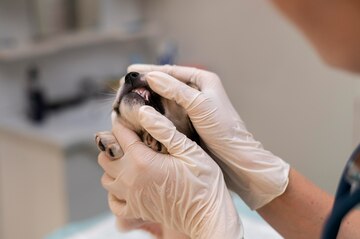Our pets rely on us for their well-being, and one crucial aspect of their health often overlooked is dental care. Dogs, like humans, can suffer from dental issues that may require intervention, including dental extraction. In this blog, we’ll discuss the signs of dental problems in dogs, behavioural changes to look out for, the importance of professional dental extraction for dogs, and how to handle emergency situations.
Signs Of Dental Issues In Dogs
Spotting dental issues in your dog early on is key to maintaining their overall health. Keep an eye out for signs such as bad breath, swollen or bleeding gums, difficulty chewing, pawing at the mouth, and changes in eating habits. If your pet is avoiding hard food, dropping food from their mouth, or displaying reluctance to play with chew toys, these may be indicators of dental discomfort.
Behavioural Changes
Dogs often communicate their discomfort through behavioural changes. If your once-playful pup becomes irritable, shows signs of aggression when approached near the mouth, or withdraws from social interactions, it’s time to investigate their oral health. Bad breath, increased drooling, excessive licking of the lips, and rubbing their face against furniture or the floor are also signs that something may be wrong in their mouths.
When To Seek Professional Canine Dental Services
Regular dental check-ups are essential for your dog’s oral health. However, there are instances when professional intervention becomes necessary. If you notice any of the above signs or if your dog has lost interest in eating altogether, it’s time to consult a veterinarian. Professional canine dental services can diagnose and address issues such as periodontal disease, fractured teeth, or infections that may require dental extraction.
Emergency Dental Situations
Accidents happen, and dogs are not immune to dental emergencies. In case of a broken tooth, bleeding gums, or any other sudden dental trauma, swift action is crucial. First and foremost, remain calm to reassure your pet. Examine the mouth gently, and if there is bleeding, apply a clean cloth to the affected area. Avoid attempting to pull out any loose teeth, as this could cause more harm. Instead, transport your dog to the veterinarian immediately for professional assessment and treatment.
Understanding the ‘when’ and ‘why’ of dental extraction for dogs is paramount to ensuring their overall well-being. By staying vigilant for signs of dental issues, recognising behavioural changes, and seeking professional canine dental services when needed, you can contribute to your pets happy and healthy life. Remember, regular dental care and prompt attention to emergencies are key components of responsible pet ownership. Visit Sydney Pet Dentistry for expert dental extractions for dogs!


